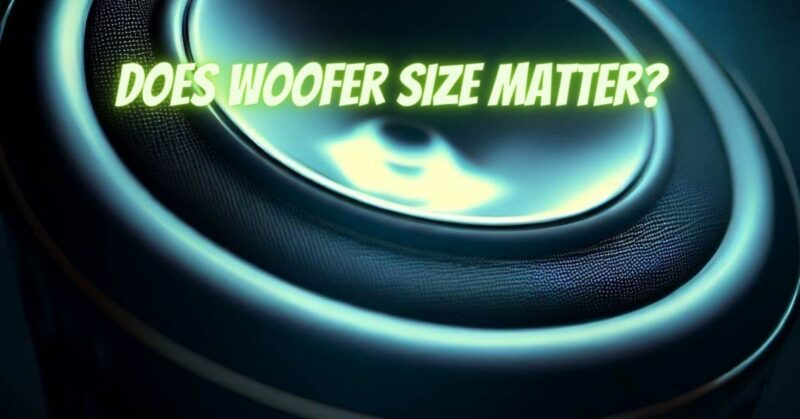The world of audio equipment can be both fascinating and complex, and one common question that arises is whether the size of a woofer truly matters. A woofer is a crucial component of any sound system responsible for handling low-frequency sounds, including the deep and resonant bass that enriches music and audio. In this article, we’ll delve into the role of woofer size, how it impacts audio quality, and whether it genuinely matters in your audio setup.
Understanding Woofers and Their Function
Before we explore the significance of woofer size, it’s important to understand the basic role of woofers in audio systems:
- Woofer Definition: A woofer is a type of loudspeaker driver designed to reproduce low-frequency audio signals, typically ranging from 20 Hz to 250 Hz. It’s responsible for producing the deep, rumbling bass notes that add depth and impact to music and audio.
Factors to Consider When Evaluating Woofer Size:
- Room Size and Acoustics: The size and characteristics of the room where you’ll be using your audio system play a significant role in choosing the right woofer size. In larger rooms, larger woofers may be necessary to fill the space with satisfying bass. Smaller rooms may not require as much low-end power.
- Listening Preferences: Your musical tastes and how you like to experience music are crucial factors. If you primarily listen to bass-heavy genres like hip-hop, electronic dance music (EDM), or rock, a larger woofer can provide the impactful bass experience you desire. For genres with more delicate nuances like classical or jazz, a smaller woofer may be suitable.
- Space Constraints: Take into account any space limitations you might have. Larger woofers typically require larger speaker cabinets, which may not fit comfortably in all environments. Smaller woofers can offer a solution when space is limited.
- Crossover Design: If you’re using a multi-driver speaker system (e.g., a two-way or three-way speaker), consider how the woofer integrates with other drivers and the overall crossover design. Proper crossover integration ensures a seamless transition between the woofer and other drivers, providing a balanced sound.
- Sound Quality vs. Sound Quantity: While larger woofers can produce more powerful bass, they may not always offer the best sound quality, especially in the midrange frequencies. Smaller woofers can be more agile and responsive, providing tighter and more accurate bass.
Choosing the Right Woofer Size: A Practical Guide
Here’s a general guide to help you select the ideal woofer size based on common scenarios:
- 6-Inch to 8-Inch Woofers: Suitable for bookshelf speakers and compact setups, offering balanced sound quality and space efficiency.
- 10-Inch Woofers: A versatile choice for a wide range of applications, providing a good balance of bass depth and clarity. Ideal for small to medium-sized rooms.
- 12-Inch Woofers: Commonly found in floor-standing speakers, offering powerful bass and overall sound quality. Suitable for medium to large rooms.
- 15-Inch or Larger Woofers: Typically used in dedicated subwoofers, designed exclusively for reproducing deep bass frequencies. Ideal for home theaters and enthusiasts seeking cinematic bass impact.
So, does woofer size really matter? The answer depends on your specific needs and preferences. While larger woofers can offer more powerful bass, smaller woofers can excel in accuracy and agility. The key is to choose a woofer size that aligns with your requirements and delivers the sound experience you desire. Ultimately, the “best” woofer size is the one that enhances your audio setup and immerses you in the world of captivating sound.


